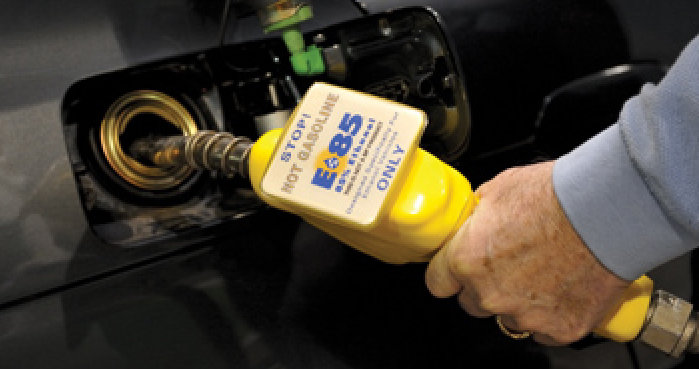Think Like Sherlock Holmes To Avoid The Wrong Diagnostic Conclusions
As a boy, I read most of the Sherlock Holmes mysteries. Sherlock Holmes was a genius-level detective who could break a case by analyzing seemingly insignificant clues like the ash from a cigar. In contrast, Inspector Lestrade, who was Holmes‘ competitor from Scotland Yard, would inevitably arrest the wrong person by jumping to a premature
When Should Fluids Be Replaced?
Several factors are driving modern fluid maintenance services. First, a modern vehicle’s service life often extends to well over 200,000 miles and good fluid maintenance practices are, in part, responsible for that remarkable achievement. Second, car counts in many shops are declining because late-model vehicles require less scheduled maintenance and less frequent repairs. Consequently, many shops are looking at add-on services, such as fluid maintenance, to boost shop revenues.
Take Time To Evaluate The Condition Of Brake Hydraulics
Mileage is an essential criterion for evaluating the condition of brake hydraulics. Keep in mind that, each time the brakes are applied, the master and wheel cylinder piston seals wear. Given time, the rubber cups in master cylinders wear to the point that they will not consistently seal hydraulic pressure. The result will often be a low brake pedal, poor stopping power or an intermittently sinking brake pedal.
Pinning Down Intermittent Malfunctions On OBD II Vehicles
Although post-1996 OBD II powertrain control modules (PCMs) are generally very reliable, we’re beginning to see more failures because the average age of our national vehicle fleet has now increased to about 11.5 years. Technically speaking, the PCM should store a DTC indicating some type of internal malfunction. But, in the real world, if your scan tool indicates “no communication” and asks if the ignition switch has been turned on, you obviously have a communications problem.
Ride Control Systems: Matching The Components To The Application
During the fall of 1989, when I was working as a mechanic for an off-road desert racing team, we raced the famous Mint 400 held in Las Vegas. By mid-race, our truck came into its pit stops with the shock absorbers so overheated that the polyurethane bushings were literally melting out of the shock mounts. Worse still, as the shock absorbers began to fail, so would the leaves in the truck’s leaf-spring suspension. Despite the suspension problems we experienced during the race, we were lucky enough to win our class. But the lessons I learned about the importance of matching the shock absorber to its application endure to this very day.
Diagnostic Dilemma: 1999 Dodge Dakota Intermittent Stall Complaints
Diagnosing intermittent stalling complaints is a challenging experience for any diagnostic technician because any number of electrical and mechanical failures can cause an engine to intermittently stall. Most of us immediately narrow this laundry list of potential failures down to the most common few, which include components like the crankshaft position sensor and electric fuel pump.
Contaminated Fuel Can Wreck Havoc On Fuel Delivery Systems
Although cases involving contaminated gasoline are relatively rare nowadays, they still occur. In many cases, the technician has replaced the fuel pump or mass air flow (MAF) sensor to address a P0171/P0174 “lean-condition” DTC with no result. In all likelihood, the technician didn’t consider the possibility that the vehicle’s fuel might be contaminated with E85 gasoline, diesel fuel, stale gasoline, or, to a lesser degree, sugar and water.

Diagnostic Solutions: Direct Fuel Injection Systems
For veteran technicians, it’s no wonder that the internal combustion engine (ICE) has been pronounced “dead” on more than one occasion. After having gone through the gas turbine craze during the early 1960s and the rotary engine fad of the 1970s, it comes as no surprise that we’re witnessing still another resurrection of the reciprocating internal combustion engine in the form of gasoline direct fuel injection.
Universal Joint Inspection And Replacement
In modern automotive architecture, universal joints are most commonly found on the rear axles of light trucks, SUVs and RWD passenger cars. While some low-angle joints are made with a rubber-compounded material, most modern universal joints are made of a steel cross connecting four trunnions containing lubricated needle bearings.
Diagnostic Solutions: Modern Spark Plug Diagnostics, The ‘Art And Science’ Of Reading Plugs
With the advent of electronic engine management systems, “reading” spark plugs has become something of a lost art. In the days of mechanical carburetors and distributors, the color and texture of the spark plug’s insulator could provide important information about the air/fuel ratio, spark timing and cylinder condition.
Automatic Transmission/Transaxle Test Prep: Torque Converter Basics
The concept of using a torque converter, oil pump, planetary gear sets, clutches, bands and a computer-controlled hydraulic valve body to transmit torque and to change gear ratios is relatively simple. To illustrate, the torque converter allows the engine to idle in gear with the vehicle stopped and multiplies engine torque during the initial stages of acceleration.
Diagnosing Inoperative Fuel Pumps
As I’ve discovered recently, times change and so do the procedures for diagnosing inoperative fuel pumps. Just a few weeks ago, I diagnosed a case in which the owner had started his vehicle for several months by spraying starting fluid (ether) into his truck’s air intake before he cranked the engine.
